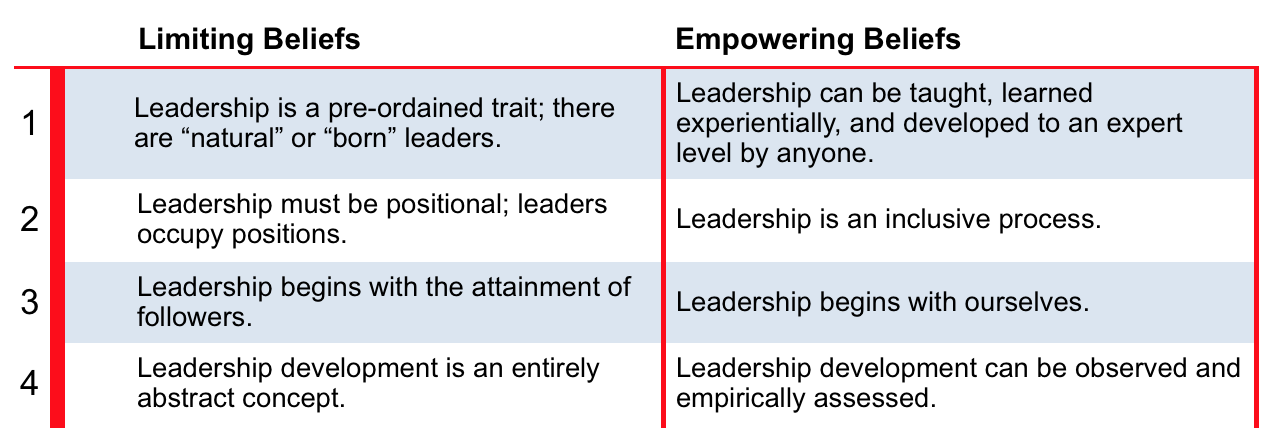If you're like me, you might be surprised by what leadership really is.
I've constantly studied and applied the latest leadership theories for years, both as an administrator for student development at a top Canadian university and, then, in running my social-impact focused media and event company since 2013.
For now, here are the best understandings I have from my studies and experience (citations included).
DEFINITION OF LEADERSHIP & LEADER
LEADERSHIP is the "relational and ethical process of people together attempting to accomplish positive change” (Komives, Lucas, & McMahon, 2006).
Then, under this definition, a LEADER would be any agent of influence and change, rather than a position or hierarchical role.
So, WHY should you care?
STEEMIT rewards your level of leadership development. Your success on this platform depends on it, whether you're conscious of it or not. Are you providing value merely to make money, or to impact someone else?
Regardless of why you are doing it, you are participating in a social network of emerging processes of leadership. And, if you hold unhelpful beliefs about leadership, they can become “self-fulfilling and self-limiting” (Avolio, 2005, p. 3).
What are the 4 MYTHS (or limiting beliefs) that hold people back from achieving success?

So, let's explore the helpful side.
1 | Leadership can be taught, learned experientially, and masterfully developed by anyone. (Avolio, 2005; Kolb, 1984; Ericsson, Prietula, Cokely, 2007)

As Avolio (2005) states, “For some people, it is simply less effort both intellectually and emotionally to accept leadership is born into some people, but not others, including themselves” (p. 2). Popular beliefs about the natural inherence of leadership are well summarized by Shakespeare’s famous verse: “some are born great, some achieve greatness, and some have greatness thrust upon them” (Act II, Scene v, Twelfth Night).
If you assume that forces outside of their control predetermine your ability to engage in leadership, you are unlikely to fully realize your potential. Your relationship with yourself, others, and the larger STEEMIT community (for example) will be stunted.
The only belief relevant to leadership development is that “greatness” is achieved.
2 | Leadership is an inclusive process.

Although positional leaders exist, acts of leadership do not require the platform or authority a position may grant. In this way, it is no exaggeration that STEEMIT and crytocurrencies are ushering in a new decentralized order. Within this platform, leadership can be practiced by anyone. By reading this and commenting, voting, or curating, you are a participant in a process of mutual influence. You are naturally included. You are an agent of of influence.
3 | Leadership begins with OURSELVES.

It is commonly assumed that leadership requires followership. This could refer to the subordination of your goals to those of the leader. Even on STEEMIT, we have literal "FOLLOWERS" and we "follow" others.
However, according to the Social Change Model, leadership begins with the individual’s self-knowledge and capacity to work collaboratively with others (Higher Education Research Institute [HERI], 1996).
It's an INSIDE-OUT process.
When we collaborate, leadership is a shared process of influence rather than one of authority and subordination (Rost, 1991).
Others may subscribe to a leader’s mission (or FEED), collaborating with that leader to further the leader's vision. However, these “others” are leaders as well, sharing in the collaborative process of leadership.
4 | Leadership development can be observed and empirically assessed.

The subject of leadership development is not only susceptible to definitional misunderstandings, but also to the idea that leadership can simply not be understood due to its seemingly mysterious complexity.
Leadership development, however, can be measured and INTENTIONALLY developed.
Right now, STEEMIT is like the wild west and we, the early pioneers. It looks like the aftermath of the big bang, with giant clouds of primordial elements gradually forming the stars and galaxies that we will one day take for granted.
According to the Leadership Identity Development Model, we are all on a developmental progression through different identifiable stages of leadership that can be assessed and provide actionable feedback (Komives, Longerbeam, Mainella, Osteen, & Owen, 2009). These 6 stages are illustrated in the graphic below, which I will explain in detail in a separate post.

(img source: https://leaderonomics.com/leadership/where-will-you-stand-in-2040)
It is by consciously progressing through these stages that we will not just become successful on STEEMIT, but in all the meaningful areas of our lives.
By first developing ourselves, let's use this platform to create a collective future that we are proud of.
Citations
*Avolio, B. J. (2005). Leadership development in balance: Made/born. Mahwah, NJ: Lawrence Earlbaum Associates.
Ericsson, K.A., Prietula, M.J., & Cokely, E.T. (2007). The making of an expert. Harvard Business Review, 85, 114-121.
HERI. (1996). A social change model of leadership development guidebook III. Los Angeles, CA: Higher Education Research Institute.
Kolb, D. A. (1984). Experiential learning: Experience as the source of learning and development. New Jersey: Prentice-Hall.
Komives, S., Lucas, N., & McMahon, T. (2006). The relational leadership model. In Exploring leadership: For college students who want to make a difference (2nd ed., Chap.3, pp. 73-114). California: Jossey-Bass.
Komives, S. R., Dugan, J., Owen, J. E., Slack, C., & Wagner, W. (Eds). (2011). Handbook for student leadership development (2nd ed.). A publication of the National Clearinghouse for Leadership Programs. San Francisco, CA: Jossey-Bass.
Rost, J. C. (1991). Leadership for the twenty-first century. New York: Praeger.
Shakespeare, William. (1889). Twelfth Night Or What You Will. Ed. Kenneth Deighton. London: Macmillan.*